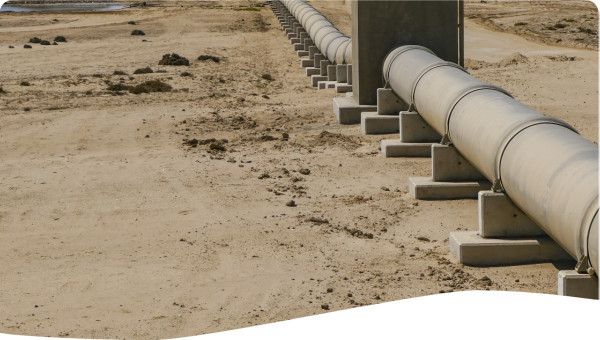In Chile, water has been privatised. However, in order to make sure that access was still available to all strata of society, the privatisation was accompanied by a robust regulatory framework, including a system of direct subsidies for drinking water consumption and sewage services for low income households. This case thus illustrates that in case of privatisation, a direct subsidiary scheme should be considered.
In Chile the privatization of public water companies during the 70's and 80's resulted in increased tariffs. As a consequence, national debate arose on the access to water services by the poorest. Before the privatization, it was recognized the necessity of a gradual increase in the tariff in order not to generate circumstances which could eventually complicate its implementation. With the aim of ensuring that all the population could have access to this basic service, the government and institutions related to sanitation designed a mechanism within the regulatory structure to protect the most vulnerable or poor households. Consequently, Chile adopted a subsidy system to the consumption of drinking water.
The aim of the subsidy system was to channel the resources to those who actually needed them. With this purpose, some necessary conditions and legal requirements were imposed to access these subsidies. This situation was also possible given the level of development of the country. A significant proportion of its inhabitants had sufficient incomes to pay for the basic services without needing any support or additional help. This made it possible for Chile to adopt a subsidy system focused on the most vulnerable social groups.
In 1989 the Law No. 18,778 was issued, which established a subsidy to the payment of drinking water supply and sanitation services. This law intended to complement the law on tariffs for these services, which would come into force in 1990. The latter implemented a self-financing tariff regime that aimed to incorporate operation, management and investment costs of running water supply and sanitation services.
The Subsidy Law No.18.778 established a direct subsidy for drinking water consumption and sewage services to low-income family groups and residential customers. The law set a percentage to be subsided on fixed and variable charges, not less than 25% nor more than 75% of consumption. This subsidy had to be equivalent for beneficiaries of the same geographical region with a similar socioeconomic status. In addition, it established that the subsidy could not exceed a total consumption of 20 m3 per month.
This law also set the terms on how a direct subsidy for the consumption of drinking water and sewerage services is granted to residential users of low-income. This subsidy system is managed by the corresponding municipalities, which in turn are responsible for the registration process and selection of beneficiaries. The municipalities also facilitate water companies with a list of selected users to ensure that the bill clearly and separately reflects the amount to be paid to the water company by users and the amount to be paid by the municipalities. The subsidy is compatible with any other subsidy the beneficiary may have received or be entitled for, in accordance with the attributions set by each municipality. Therefore, the selection system has been established to adapt on specific socio economic situation at municipal level. It constitutes a method of socio economic characterization enabling state social action to be targeted on the poor. It is achieved by the so-called CAS form (Socioeconomic Characterization Survey), now FPS (Social Protection Form). This form enables differentiation among the poorest households by assigning scores. It is designed for an equitable distribution of the various subsidies granted by the Government's social protection network.
The subsidy system has evolved from a low initial use to the current high levels of implementation, enabling the access of poorest people to sanitation services. In addition, sanitation plans including the construction of new wastewater treatment plants all over Chile are being implemented, with the coverage already reaching 86% in 2010. The implementation of subsidy system required some amendments to the subsidy law and its corresponding regulation. From these amendments on, there was a constant growth of both quota available and related budgets proposed by Ministry of Planning and allocated by the Ministry of Finance. The introduction of the subsidy and the results achieved so far allowed an increase of water tariffs. This also resulted in cost recovery of water services without compromising social objectives and the distribution of such a basic and fundamental service.
Prior to undertaking privatization and/or public-private partnerships, effective, clear and adequately implemented institutional and regulatory reforms need to be considered.
The direct subsidy scheme should be considered and must have an enabling but not supportive approach.
The poorest households are willing to pay for a safe and reliable service however, sufficient education and promotion is necessary.
A high percentage of households in Chile have a micro measuring device, which enables the existence of a subsidy based on the real consumption of each beneficiary.
The subsidy should cover only the difference between actual consumption and the ability to pay.
 Case studies
Case studies
